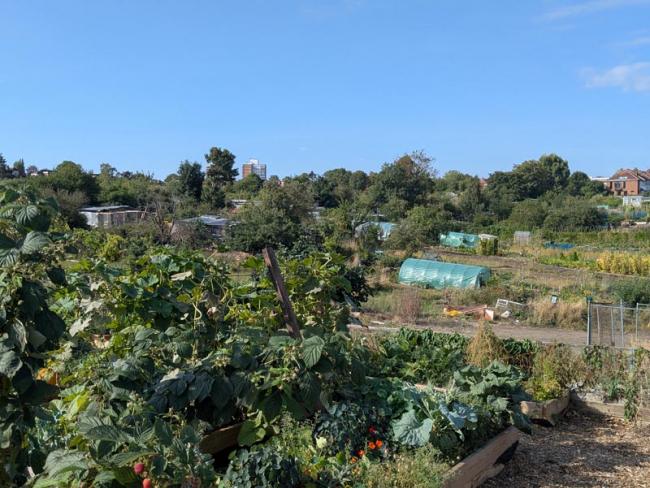
Allotments, north London – a valuable part of food production and of community life. Photo Workers.
Deputy prime minister Angela Rayner prompted a storm of outrage when it emerged that she has eased the way for councils to sell off allotments. This is an unexpected effect of the planning changes she announced in March. The threat is real, despite government assurances.
According to a report in The Guardian on 5 August, the National Allotment Society (NAS) cautioned that headlines predicting the demise of the allotment were alarmist. NAS said that many protections were already in place and, as a consultee on allotment closures, it will always ensure due process is followed.
Those protections are not strong, which is a concern to those fearing for the future of their allotments. The worry is that the drive for housing will trump the evident utility of the land for allotment holders. They will know Rayner created a “grey belt” planning category, carved out of green belt land – and destined for housing – hoping that label (and changes to the rules) would stifle opposition.
If cash-strapped local councils (the majority), see an opportunity to raise money by selling allotments to a developer, they must apply to the secretary of state (Rayner) for permission. But once a site is seen to be under threat in that way, many allotment holders will abandon it. And eventually it will meet the legal threshold for sale as being “underutilised”. That’s the sort of approach slum landlords and dodgy developers use.
• A longer version of this article is on the web at www.cpbml.org.uk
